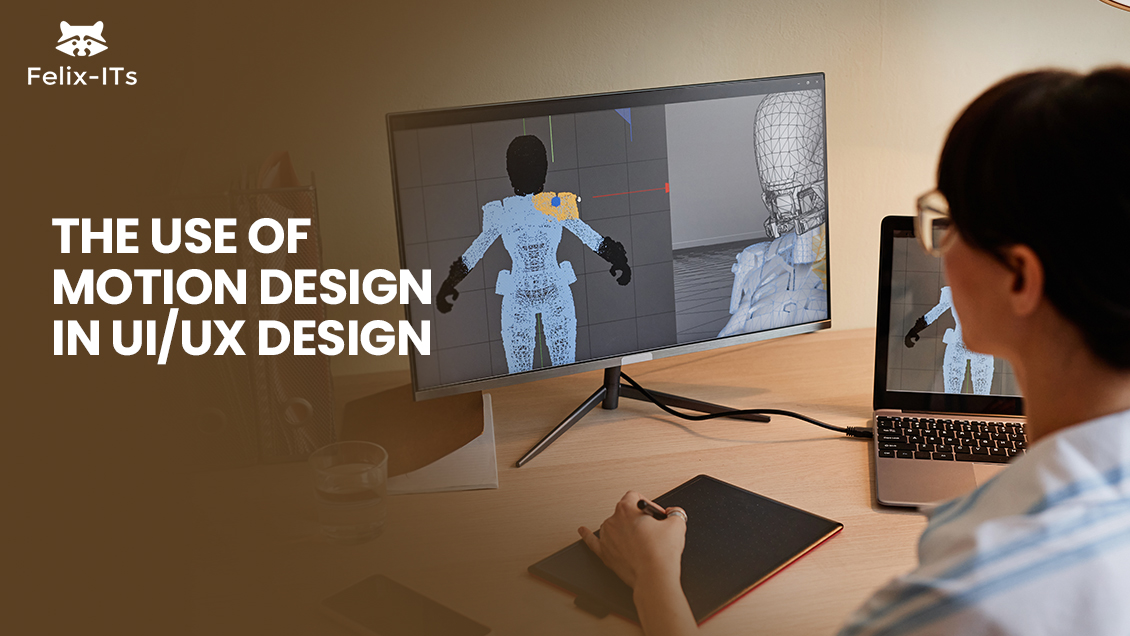Have you ever noticed how an app or website with smooth, well-designed animations and motion feels more polished and professional compared to one without? That’s the power of motion design in UI/UX design.
Motion design is the use of animation and motion to guide the user’s attention, provide feedback, and enhance the overall user experience. It’s a subtle, yet powerful tool that designers can use to create more engaging interfaces. In this blog post, we’ll explore how motion design can be used in UI/UX design to enhance user experience and create more engaging interfaces, with some examples.
First off, let’s talk about how motion design can be used to guide the user’s attention. By using animation, designers can draw attention to important elements of an interface, such as a call-to-action button or a new feature. For example, a subtle animation of a button when a user hovers over it, can help draw attention to the button and make it more noticeable.
Another way motion design can be used in UI/UX design is to provide feedback. For example, when a user clicks on a button, a small animation can indicate that the action has been completed. This not only provides feedback but also enhances the overall user experience.
A great example of motion design in action is the Material Design Guidelines used by Google. The guidelines use animation and motion to guide the user’s attention and provide feedback in a subtle and consistent way. This results in a cohesive and polished user experience across all Google products.
Another example is the onboarding flow of the popular note-taking app, E vernote. The app uses motion design to guide the user’s attention and provide feedback throughout the onboarding process. For example, when a user finishes setting up their account, a small animation shows them how to navigate the app and add their first note. This not only helps to guide the user but also makes the overall experience more engaging and enjoyable.
here are a few more examples of motion design in popular apps and websites:
Airbnb: The travel app uses motion design to create a sense of depth and movement throughout the app, making it feel more immersive and engaging. For example, when a user scrolls through a list of properties, the images smoothly transition between each other, creating a sense of movement and flow.
Uber: The ride-hailing app uses motion design to guide the user’s attention and provide feedback. For example, when a user requests a ride, the map smoothly zooms in on their location, and a small animation indicates that the request has been sent. Once the driver arrives, a similar animation indicates the driver’s location on the map.
Dropbox: The cloud storage app uses motion design to create a sense of organization and hierarchy. For example, when a user creates a new folder, it smoothly slides into place among the other folders, creating a sense of organization and flow.
Dribbble: The design community website uses motion design to create a sense of movement and flow throughout the site. For example, when a user scrolls through a list of shots, the images smoothly transition between each other, creating a sense of movement and flow.
Google Maps: The mapping app uses motion design to create a sense of depth and movement on the map. For example, when a user pans around the map, the buildings smoothly move in and out of view, creating a sense of depth and movement.
As you can see, motion design can be used in a variety of ways to enhance user experience and create more engaging interfaces. It’s becoming an increasingly popular tool in UI/UX design and many companies are using it to improve user engagement and satisfaction.
When using motion design in UI/UX design, it’s important to keep in mind that less is more. Motion design should be subtle and not overpower the overall design. It should also be consistent throughout the interface, so that users can easily understand the meaning of each animation or motion.
In conclusion, motion design is a powerful tool for enhancing user experience and creating more engaging interfaces in UI/UX design. By using animation and motion to guide the user’s attention, provide feedback, and enhance the overall user experience, designers can create interfaces that are not only more engaging but also more polished and professional. So next time you’re designing an interface, think about how you can use motion design to enhance user experience and create a more engaging interface.
